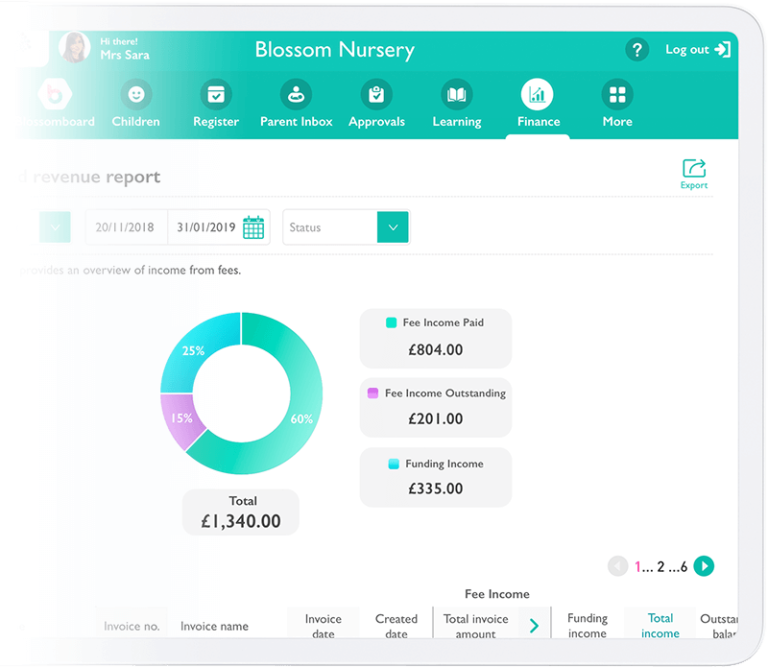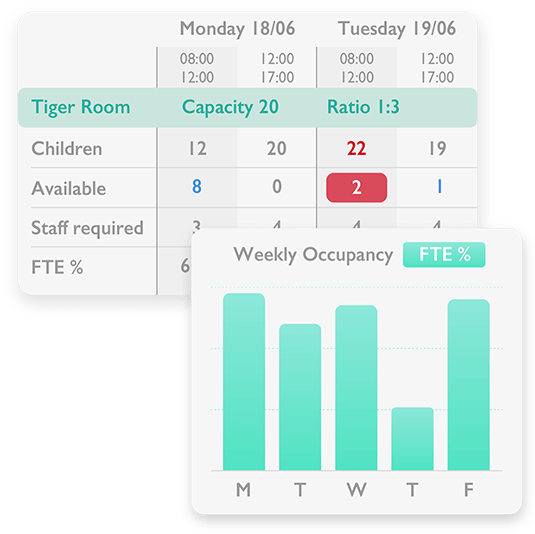Want to know about government childcare funding for 2025? In this article, we cover all you need to know about nursery-funded places and how they work. We include the average nursery rates for 2025 and the latest information from the DfE (as of May 2025).
Childcare funding changes in 2024 and 2025
One of the main changes to early years in 2024 that the childcare sector saw was the huge expansion of funded childcare places. The changes began in April 2024, and targeted working parents, aiming to make childcare more accessible and affordable.
Childcare funding changes April 2024
In April 2024, parents who met the working parent eligibility criteria could access 15 hours of funded childcare with nurseries that offered funded places.
Nursery funding changes September 2024
The offer was extended again in September 2024 to working parents of children aged nine months and above. The working parent entitlement for children 9 months and above is also 15 hours of funded childcare across an average of 38 weeks.
Funded childcare changes September 2025
96.6% of all parents who applied for a government-funded nursery place in September 2024 secured one. Therefore, following the successful uptake of the entitlement expansion, the government will continue with the proposed education plans noted in its manifesto.
From 12th May, working parents with children above the age of 9 months as of September 1st 2025, will be eligible to apply for 30 hours funded childcare.
Want easy visibility of all funding your early years setting receives? Generate accurate financial reports showing income, funding expectations, and financial forecasts to ensure a financially healthy 2025 and beyond with Blossom.
How do funded nursery places work?
The government uses two separate funding formulas to decide how much each funding type receives. The Early Years National Funding Formula (EYNFF) for three- and four-year-olds, and a new formula for two-year-olds.
Additional funding, such as the Early Years Pupil Premium (EYPP) and the Disability Access Fund (DAF), can also be added to the baseline funding rate.
Supporting disadvantaged children is a priority, so regulations have been put in place that require local authorities to ensure the hourly rate early years providers receive for disadvantaged children is at least equal to the two-year-old rate.
Your local authority then sometimes takes some away for admin purposes, and you get the rest (95%, to be exact).
How do I offer funded places?
A nursery doesn’t have to offer funded childcare places. Decisions can be made depending on nursery budgets, staffing capacity and business strategy.
Nurseries can charge additional fees for services and resources beyond childcare costs. Examples of additional nursery charges may include meals, snacks, extra educational trips, and activities like baby yoga.
If you want to offer funded places, contact your local authority if they haven’t reached out to you already. Their aim is for every child to have a place, and funded places can only be offered by local-authority-approved settings.
Once that’s arranged, you’ll need to see the birth certificate of the child that is going to take the place, and there’s a declaration the parent needs to sign. Your local authority will have forms you’ll need to fill in both when filling the place and when claiming hours provided.
In short – contact your local authority and go from there!
What is 'stretched' funding?
The government nursery funding equates to 570 hours for the 15-hour offer and 1140 hours per year for the 30-hour-a-week childcare funding offer across 38 weeks.
‘Stretching’ is the option to average this funding allocation across 52 weeks of the year instead, if nurseries feel this is more financially even when planning their budget goals and the local authority allows it.
‘Stretching’ is the option to average this funding allocation across 52 weeks of the year instead, if nurseries feel this is more financially even when planning their budget goals and the local authority allows it.
Make sure funded places fit within your goals for the year. Stay organised and on track for your nursery’s 2024 growth goals with our nursery budget tips article.

What are the childcare funding rates in 2025?
The nursery funding rates for 2025- 2026 were confirmed in December 2024.
The average hourly childcare funding rate for each group across England is:
- 3 and 4-year-old universal hours entitlement – £6.14
- 3 and 4-year-old additional hours entitlement – £6.06
- 3 and 4-year-old entitlements – combined average – £6.12
- 2-year-old entitlements – £8.53
- Under 2s entitlement – £11.54
- Maintained nursery school (MNS) supplementary funding – £5.90
- Early years pupil premium (EYPP) – £1.00
- Disability access funding (DAF) – national yearly funding rate – £938
Even with the increase in funding, many nurseries may only break even financially. You can easily calculate your funding picture using Blossom’s funding calculator.
How and where can funded hours be used?
If a family wants to claim their universal 15 hours of childcare for their three or four-year-old, the first point of contact your setting. Parents must apply online for working parents’ childcare funding.
After checking if they are entitled to government nursery funding, they can use their entitlement at any of the following settings if they’ve been approved to offer funded places:
- A nursery unit operated by a local authority school
- A childminder
- A preschool or playgroup
- An independent school
- A private day nursery
You don’t need to prove a parent is eligible for funding as a nursery owner, but the parent needs to sign a declaration of funding eligibility if you’re giving a place to their child.
Nursery funding entitlement can be split between two providers for at least two days (not exceeding 10 hours per day).
It’s vital you keep on top of the admin that comes with funded nursery places, and we’re here to help. Blossom’s funding software can calculate and allocate the funding you receive for each child for you.
Challenges to watch out for with nursery funding
There are many ways to make government nursery funding work for you and your early years setting. However, it is important to be aware of some of the challenges that come with the changes to the new funding structure.
Your staff planning may change depending on the number and types of places you offer. Children under the age of two offer the largest financial benefit (on paper), but consider the space, staff and resources you need for this.

Having total occupancy visibility is vital to identify which places will be coming available in the next 12 months and beyond. Nursery software tools help your early years business to stay profitable.